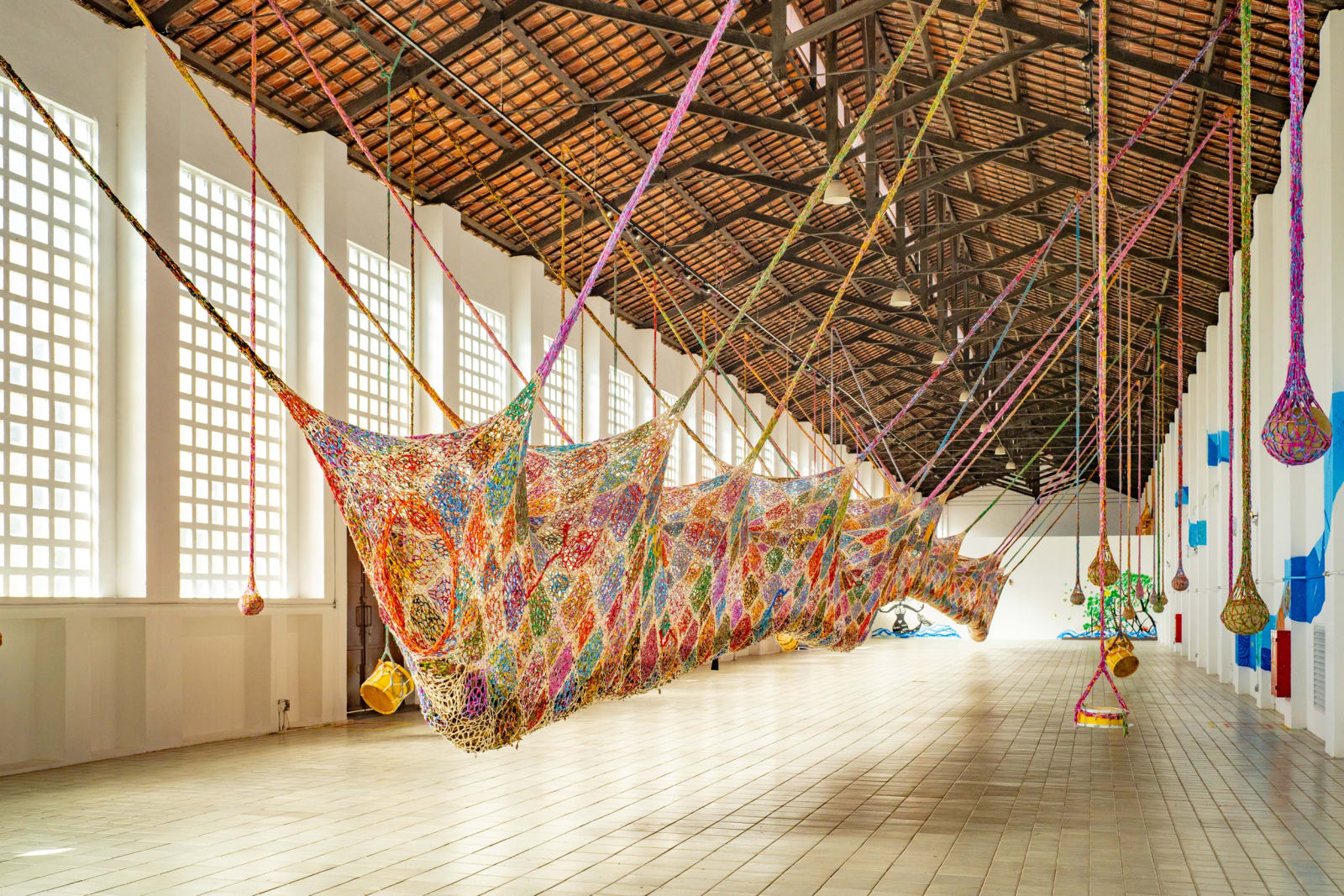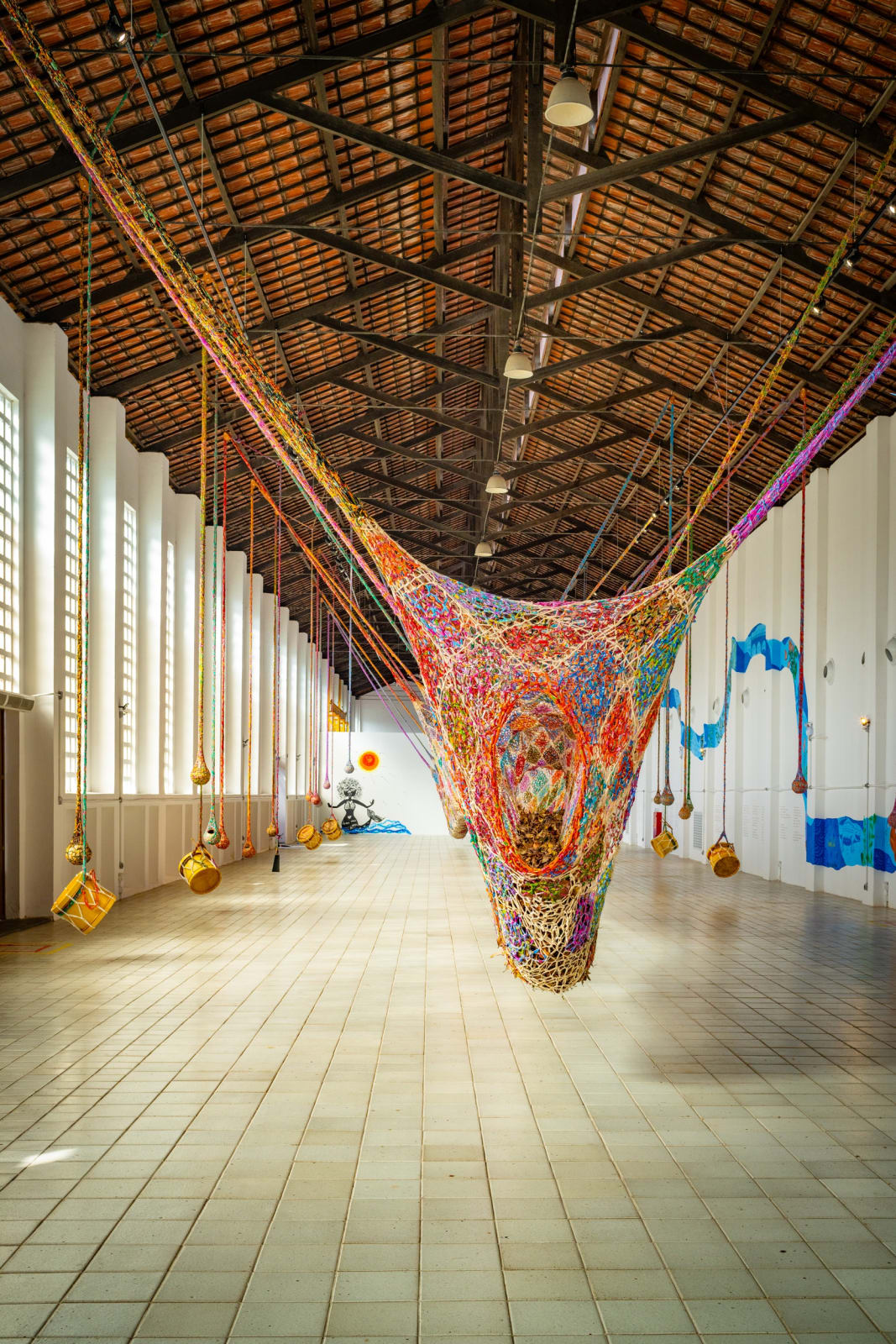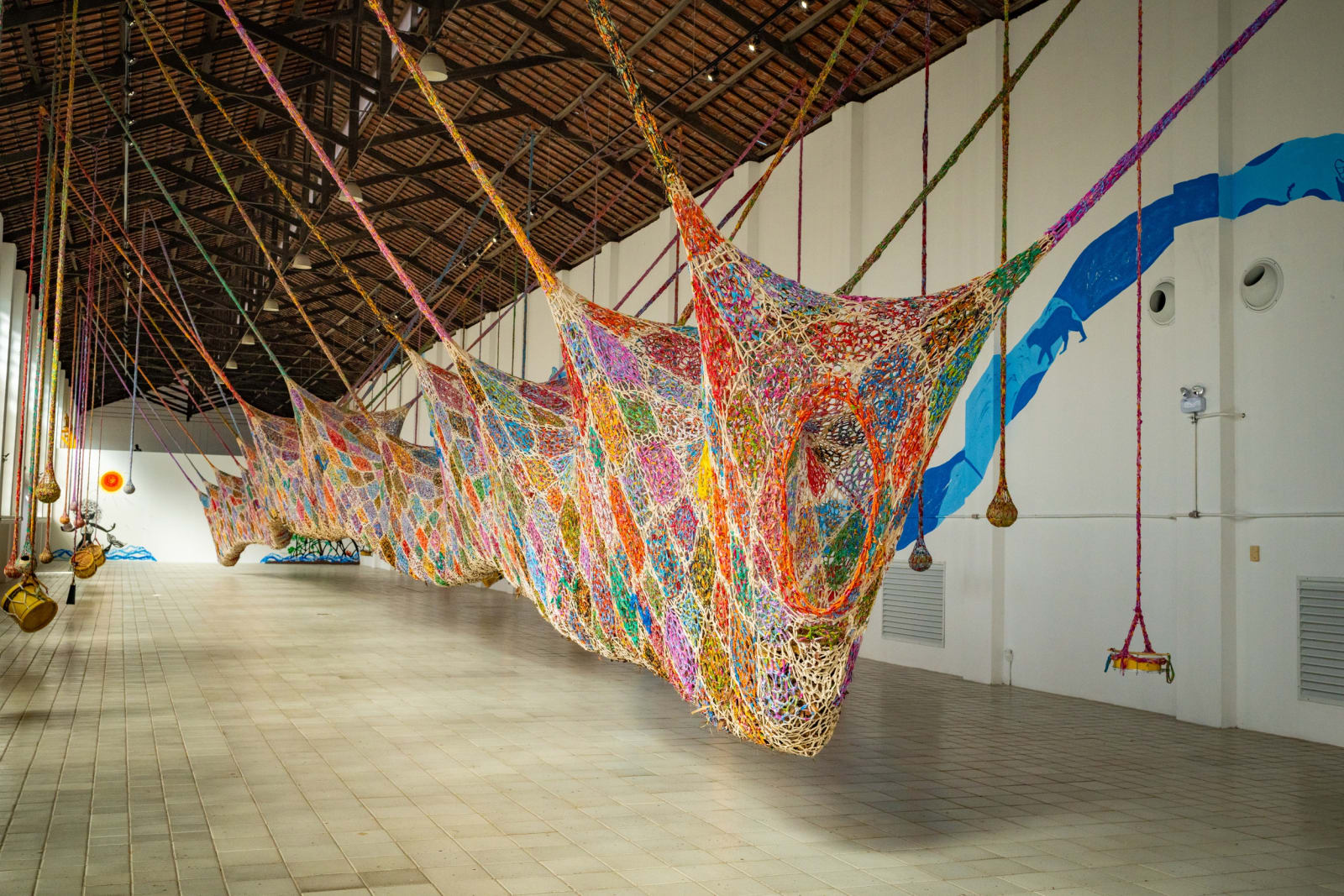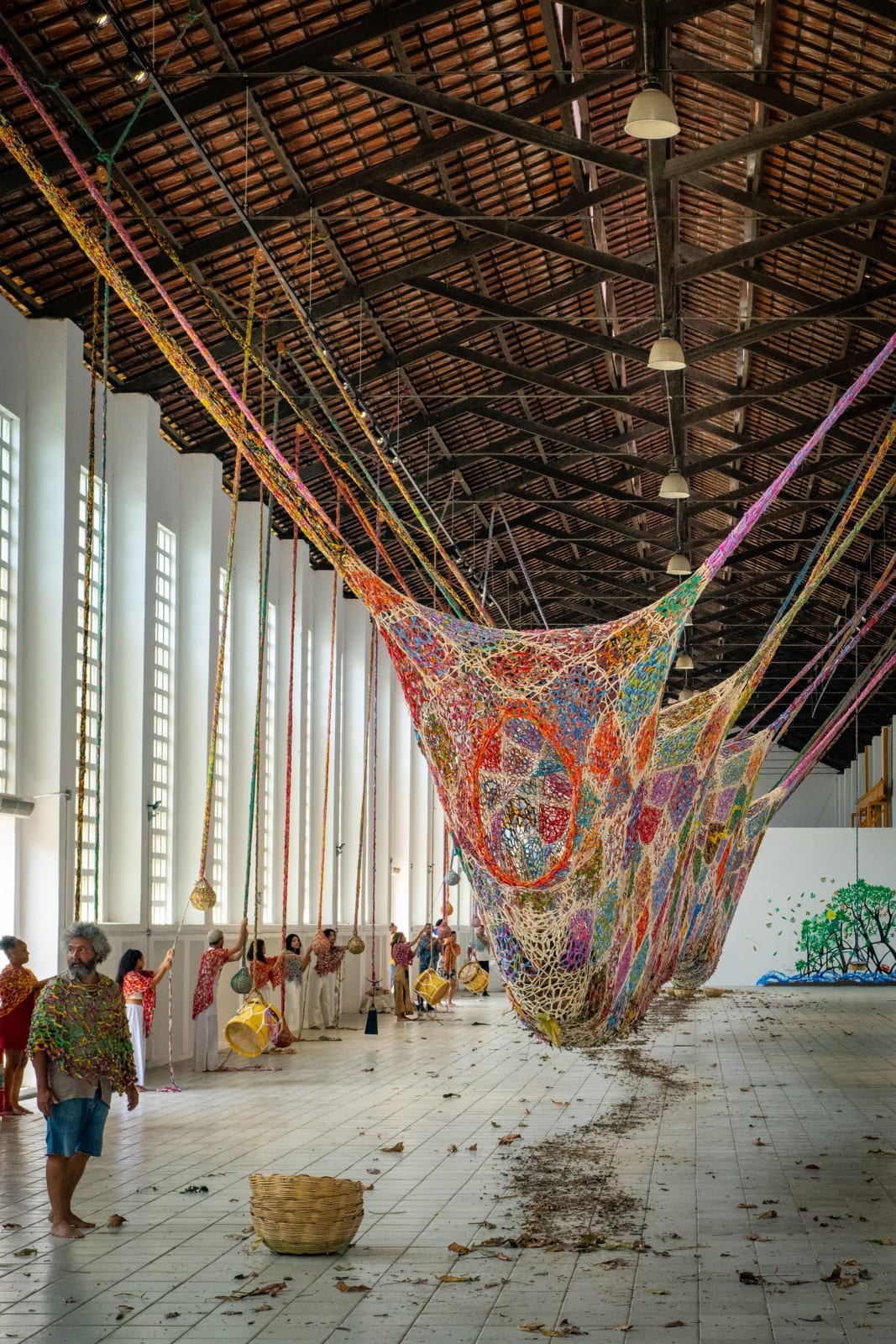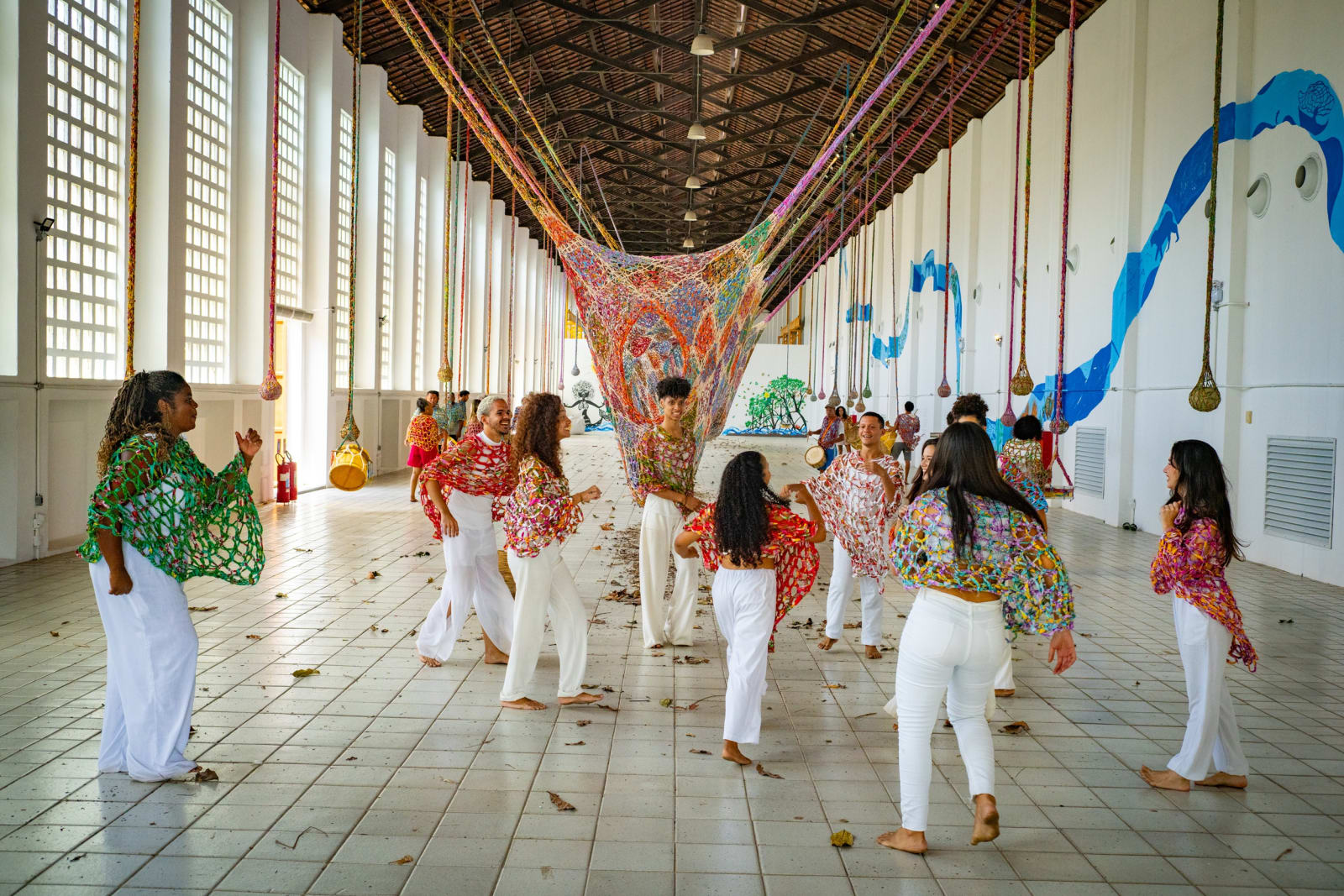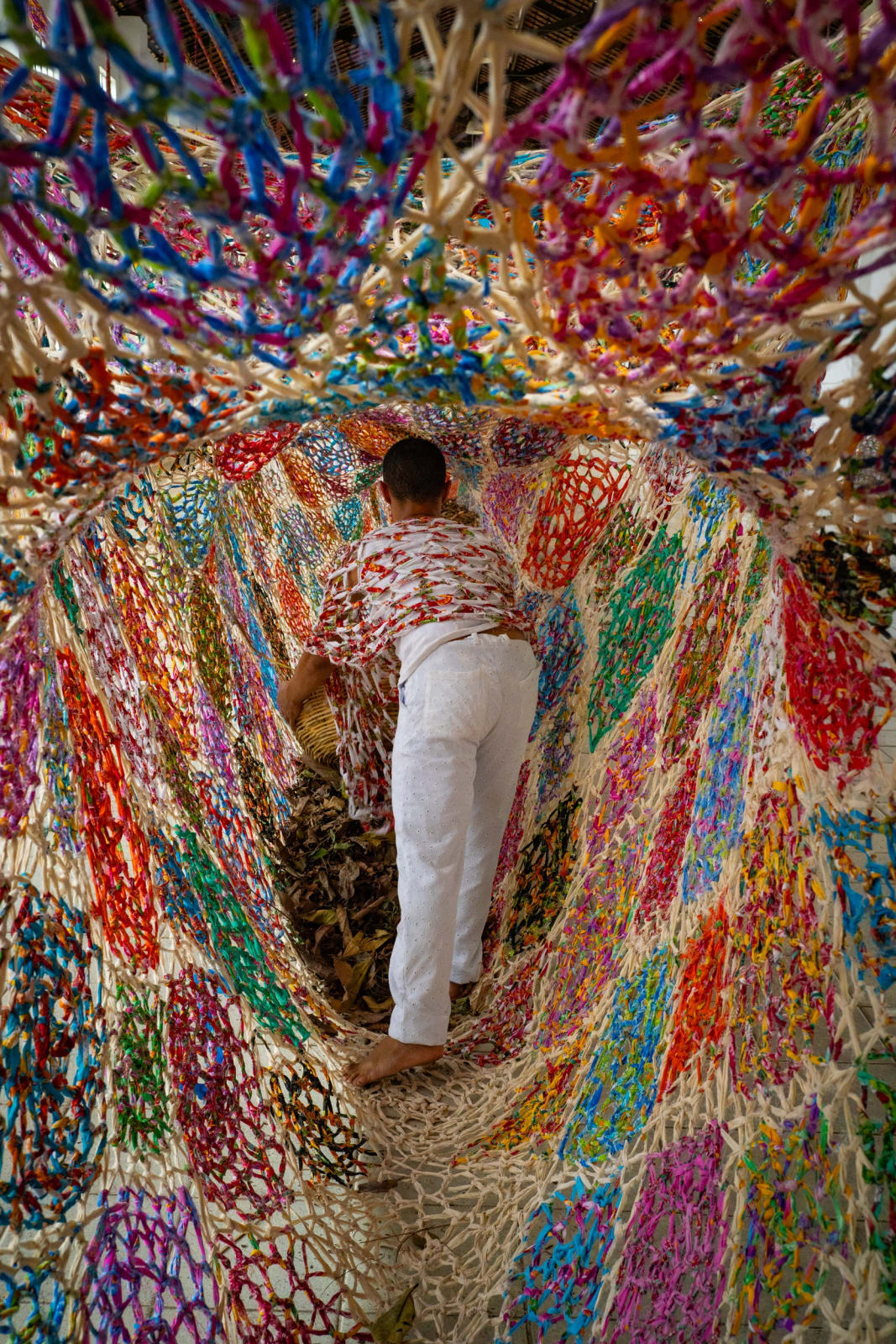CapiDançaBaribéNois , a sculpture-rite by Ernesto Neto, reopens the Estádio da Oficina Francisco Brennand and, thus, fulfills the role for which its founder had intended it almost 20 years ago: to be a “space for temporary exhibitions and cultural events”. If Francisco wanted to open his citadel to other creators, it was precisely from listening to this generous invitation that the work that is now installed here emerged.
One of its seeds was the encounter of the artist from Rio de Janeiro with Peixe-folha (1986), a mural by the ceramist from Pernambuco. Confronted with the image of a wavy and hybrid animal – half snake, lizard and plant –, Ernesto felt identified. After all, serpentine shapes abound in the work of this sculptor whose central material is not the density of clay, as in the case of Brennand, but the lightness of fabrics and, in particular, crochet.
The traditional technique, popular in many parts of the world, has fascinated the artist for its constituent voids, hollow stitches that produce moldable and permeable forms. Expanding the scale of crochet, which is now done with the fingers, Ernesto Neto has created sculptures pregnant with air that, floating in the landscape, create a repertoire of curves, paths, holes, spirals and reverses that take the porosity between bodies and topologies as an aesthetic and political horizon.
Deeply touched by the sinuous movements that surround us, from animals to water, since the 1990s the artist has been challenging the lines and right angles of modern Western rationality, exercising the undoing of the many culturally established dichotomies, such as the binomials “me/us” and “inside/outside”. With this intention, his sculptures and installations have acted as devices of contact, of relationship and crossing. Like bodies, skins and membranes, they are not autonomous pieces to be contemplated from a distance, but situations in time and space that are intended to be inhabited, traversed, touched and experienced.
In this direction, inundated by the centrality of fluids in his poetic research, imbued with the presence of the Capibaribe in the city of Recife and taken by the bodily memory of the drag of the water as we walk through it, Neto aimed at that creature with many legs by Brennand, the course of a river that is, in itself, an untamable animal in motion. As in Cão sem plumas(1950) - an iconic poem about the Capibaribe River in which João Cabral de Melo Neto says of the river that “Its waters flowed (…) with the waves / dense and warm / of a snake” - Ernesto envisioned a sculpture stretching along the length of the stadium, winding its body with the curves of its body as if it were a colorful boa constrictor; crossing its architecture as if it were traveling along a curvilinear river course. A sculpture-path that calls us to movement, since walking is inherent and constitutive to it.
CapiDançaBaribéNois itself crossed the Capibaribe River, implying its installation-like form to its process of formation as a rite. Bordering the Capibar (Monteiro), Caiara Park (Iputinga) and the Rio NGO (Mata da Várzea) to honor, through these spaces, the fight for environmental preservation and education, the sculpture traveled along the mighty and muddy river, from Marco Zero to Oficina Francisco Brennand, in a crossing driven by the movement of the Rivus group and the drumming of master Rodrigo Scofield, of the Maracatu Real da Várzea and the Coco de Duas group. Metamorphosing into a procession, the animal ー crocheted from strips of calico and cotton voile and, later, ritually filled with dry leaves ー became a collective prayer for the health of the Capibaribe, of societies and of the relationships between humans and non-humans: existences deeply connected to each other from the waters that constitute us inextricably.
Along its riverine path, CapiDançaBaribéNois came across the garbage and sewage that leaks not only from wealthy homes or from the favelas located on the metropolitan banks of the Capibaribe, but also from the pollution that accumulates along its course from the Pernambuco hinterland, into whose waters industrial waste of all kinds is dumped, such as the dyes used to wash jeans. As a subject, the River faces social and environmental violence that equally affects millions of people who are structurally unable to access their constitutional rights to dignity and, therefore, to the fullness of life.
Sculpting-praying the Capibaribe is, therefore, a form of social action. In doing so, CapiDançaBaribéNois joins initiatives such as Inciti – Research and Innovation for Cities (UFPE) and projects such as Acalanto (in the Detran community) and Iputinga Sociocultural, which graffitied the dreamed-of shapes and colors of a clean, navigable river on the walls of the stadium. Organizations that have fought not only for the Capibaribe, but for us, the collective to which the installation’s sonorous title refers. The artist Libélula also painted the walls of the space, making present a water entity.
Touched by the magic of the waters, by the resilience of the Capibaribe, by the strength of the work of so many people and social movements, as well as by the vivacity of a small tree that – originating from the source of the river, in the municipality of Poção – has landed like its navel to the sound of Agda's words, CapiDançaBaribéNois evokes the abundance of life, the renaturalization of the Capibaribe and the fruits that are to come: such as the possibility that, perhaps in the near future, we will be able to routinely reach the Oficina Francisco Brennand guided by the silent dance of its vigorous waters.
– Text by curator Clarissa Diniz –
